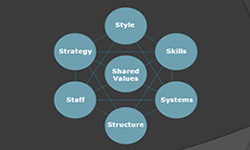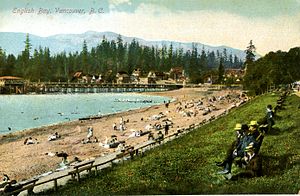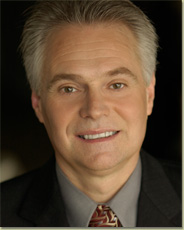Your Company culture often works to resist raising prices. Pricing part 4
Company culture works to resist raising prices. Pricing part 4.
Your company culture and how you have trained your customers work the most against raising prices and thus increasing profits. Culture in action time. Look at two sales people, Tom and Sam at the end of the year bonus time. Tom blows through his volume targets and makes 150% of quota , but he had to reduce prices, so that his net profit margin dropped 25% . Sam exactly made 110% of quota plus she got a 10% premium for the product. The CFO knows that Sam dropped much more dollar profit to the bottom line than Tom. So why does Tom get the Porche and Sam the steak knives? It was true in Glengarry Glen Ross and still true now, volume trumps profit. Until the company culture understands that value selling is the only route to long term growth and profitability, the best intentioned sale force will be rewarded for exactly the wrong behavior. Since if sell on value, you can afford lots of drop in volume before you get a drop in profits. Yet in the market today, value selling results in growth of revenues ( profit and volume).
The other piece of culture that just is wrong on every level is not setting out the discount policy well before the big bids come in. Instead the table talk is what price will we have to go with to win this one? What number will get us through the door? This speaks to lazy management practices and people who are unwilling or unaware of the work that needs to be done to set out pricing policies ahead of time. Perhaps we could call this “just in time” management.You know that if this is a common mispractise, there are other things that are also eroding the profit margins.
This is very fixable and perhaps the company is unaware that there is a better way. McKinsey tells us that a raise of the selling price of 1% can immediately drop over 10% to the bottom line. We see this result and more all the time and it is pretty exciting stuff.
Related articles
- Companies Torn Between Price Hikes and Frugal Consumers (dailyfinance.com)
- Africa’s 1 Billion Consumers Draw Giant Wal-Mart (businessweek.com)
- Workers agree: company culture matters (theglobeandmail.com)
- How a CEO can build a strong Organizational Culture (gautamblogs.com)
- Some Small Firms Raise Prices (online.wsj.com)
- What generates the highest profit margin, product or service? Pricing part 3 (regnordman.com)
Category: Branding, Communication, Leadership, Management, Marketing, Pricing, Sales
Cruising’s Dirty Little Secret.

- Image via Wikipedia
Cruising’s Dirty Little Secret.
Some of you may know that my wife sells travel, mostly cruises. She has been trying to educate me that all-in cruises at the luxury level are terrific value. I always looked at the all inclusive cost and opted for pay as you go. Recently I discovered a dirty little secret about cruise line pricing.
The major cruise lines are very very smart. They know that we are hardwired to avoid costs if we can. Cruising is priced at luxury, premium, mid-market and value price points. When you look at luxury prices (expect; smaller boats, 5 star service, river cruises, perhaps sailing vessels) they price all-in. All-in means everything is included in the price. It includes return airfares, meals and accommodation, transfers to and from the vessel, all tours, dinner wine, and suite amenities. When you look at the all-in cruise price per day, it usually looks big! For every other types of cruise, your fare just includes your food, accommodation & entertainment, the rest is a la carte.
I, being the suspicious fool that I am, “assumed” that luxury padded the price and so I opted for the other levels. The luxury lines, and my wife, argue that once you add it all up their fares are more than reasonable. (This is classic value selling). I put that down to salesman’s puff. All the non luxury “levels” constantly trumpet their per day fare sales, to me they just had to be cheaper than luxury. Right?
I could not have been more wrong.
Last year I went on a terrific 22 day Beijing to Bangkok cruise where we took an extra week in Thailand, giving us 29 days in all. Thailand is a cheap place to live well. Adding up all the flights, taxis, tours, food, wine, accommodation, etc., once all the bills came in, the 29 days put me back ~ $15k for us (2) ~ $520 per day. But it was a very great holiday, not to be missed. This cruise was advertised “on special” at $169 per day. And the all else, my wife used her travel smarts to get discounts everywhere she could – e.g. she found a great price on a round trip airfare, hotel and tour guide in Beijing.
My buddy just booked a different 21 day China riverboat cruise for next April, luxury level, first class, best cabin, all included for $6000 all in. Netting them (2) a cost of $285 per day. And he will have a “no surprise” Visa bill at the end of his cruise. No booking of flights, no arranging hotels in China, no worry about airport transport, no paying for tours. He only has to get his wife and himself back and forth to YVR. This is a deal. Even if he paid twice as much ($570 per day), he still beats my special “cruise” price. His total effort ? Read an email, go to the website, pick a cabin and enter a credit card.
I am permanently chastened. My wife is right, again. The differences between my buddy and me? He has a personal net worth 20 times mine. He always goes luxury. He knows a deal when he sees it. He values his time. And he drives a much nicer car (but he keeps them a long time). Put him down as older and wiser.
Cruise lines are smart. We consumers think we are such great price conscious shoppers. Yet most of us are slaves to a desire to avoid (or delay) costs if given the choice. We go for the unbundled prices so that we can make the choice to spend more later. And we fix an unrealistic reference price/cost in our heads as we shop.
This makes the non luxury cruise lines marketing simple. Advertise the very lowest price you can for even just a few seats. Get folks to buy the cruise ( and rarely at the lowest advertised price – ’cause they are gone) . Let the buyer do all the arranging work; such as finding, booking, paying for hotels, transfers, air etc., or offer these services at exorbitant rates. Once you get them on board, up sell on wine for meals, tours, drinks in the evening, specialty restaurants, laundry, gift shop and boutiques on board, internet, spa services, hair salon, fitness classes, etc.
It’s in our nature to only look at the lowest cost going in and the true cost only becomes visible when we get back home, if we even look. That lowest cost becomes our “reference” cost which we get anchored to during the selection process. Once we commit, our emotional attachment to a “holiday” makes us much easier targets for continued up-sells. In for the penny, in for the pound as my mother used to say.
So the lesson learned – think like a rich guy (who keeps his money close), force yourself to look at the all-in benefits of luxury because if left to your human nature, you will select a more expensive a la carte option. My mother also used to say, There is nothing more expensive than a bargain.
Me? I am going home to recount my paper clips and listen to my wife more .
Related articles
- Book Early to Enjoy a Cheap Cruise Vacation (cheapcruises.net)
- Considering a Last-Minute Getaway? This Year’s Cruise Deals Offer Exceptional Value, Reports Cruise Critic, But You Need to Act Fast (prnewswire.com)
- Four Things to Demand with Any Cruise Vacation (cheapcruises.net)
- So You Want to Be a Cruise Ship Lecturer? (abcnews.go.com)
Category: Travel
Twisted Webs. Darlene Quinn.

- Image via Wikipedia
Twisted Webs. Darlene Quinn. 2010. ISBN 9781934572481. The second in a series on intrigues in and around the fashion and retail industry by this fiction author. This one is a prequel to the first, Webs of Power. This is a skilled author who writes a real page turner. The subject is around the kidnapping of a twin baby sister, who remains missing for eight years. Lots of plot twists and turns to keep the mystery buffs happy.
Category: Fiction
Practical Pricing. Translating pricing theory into sustainable profit improvement. Michael Calogridis.

- Image by Getty Images via @daylife
Practical Pricing. Translating pricing theory into sustainable profit improvement. Michael Calogridis.2010. ISBN 9780230614604. A different book on the subject than Thomas Nagles. Calogridis gets you very quickly into the hows of pricing and gives the reader very useful tools to display the concepts to others clearly and efficiently. It works well as a first serious book on pricing and reads quickly and easily. I really enjoyed his “here’s how to do this” style and his obvious experience with how utterly unprepared companies are to make strategic pricing decisions. It is not always the sales guys fault that they ask for all those discounts to get the sale. There are numerous approaches, tactics and assumptions that companies can use to be fully ready well before the sales guy has to sell. Once sales guys sell (and get comp’d) on value, they will start to complain about all the ways the company fails to deliver on their value promise, which will make you a better company.

Related articles
- Getting Your Pricing Right – A BCTIA Panel Discussion in Vancouver (leveragepoint.com)
- Resources on Value Management for Product Development, Pricing, Marketing and Sales (leveragepoint.com)
- Sales and Marketing Alignment (demandmetric.com)
Category: Communication, Finance, Leadership, Management, Marketing, Sales, Strategy
The Strategy and Tactics of Pricing. A guide to growing more profitably. Thomas T. Nagle, John E. Hogan, Joseph Zale.
The Strategy and Tactics of Pricing. A guide to growing more profitably. Thomas T. Nagle, John E. Hogan, Joseph Zale. 2011ISBn 9780136106814. As my due diligence for a panel on pricing next week (Oct 20) in Vancouver (http://www.regonline.ca/Register/Checkin.aspx?EventID=900801) I have been reading Nagles 5th edition of his textbook on the subject and am thoroughly enjoying this book. It is as much the application of psychology as analytics. He makes the best arguments and execution strategies for value pricing I have ever read.
In his thoroughness I am finding lots of sales aha moments. These are the times when you encountered types of buyer and competitor behaviour, made a decision, learned to regret it, lost $$$$$$ , and over time developed/learned better responses. Nagle describes the theory behind why the better responses worked and how to improve even more . This is a very similar experience I had when first reading Geoffrey Moore. “All the time spent learning through doing when someone had already written this down”. Of course had I known much of this sooner I would have been even more of a pain in the ass to my superiors/employers.
There may not be one book that contains everything on pricing, but this one comes extremely close. His generous use of examples pulls tired brains like mine through some of the numeric analysis. I know I will be a much better salesperson from reading this book. I suggest this is a book for CEOs, VPs Sales, Marketing and Finance in any type of company. Thanks Steven Forth for dropping this copy off to me.

Related articles
- Resources on Value Management for Product Development, Pricing, Marketing and Sales (leveragepoint.com)
- Getting Your Pricing Right – A BCTIA Panel Discussion in Vancouver (leveragepoint.com)
- Are Software as a Service Vendors Innovating on Pricing Metrics? (leveragepoint.com)
- The Real Growth Driver: Blending Commoditization and Differentiation (leveragepoint.com)
Category: Communication, Leadership, Marketing, Sales, Strategy
the mesh. Why the future of business is sharing. Lisa Gansky

- Image via Wikipedia
the mesh. Why the future of business is sharing. Lisa Gansky. 2010. ISBN 9781591843719. This is a must read book for business this year. Ever wondered how and why Zipcars is growing so fast? Want to find out about over 1000 ventures that have solid business models around sharing? If you want to make serious money this is a book to read. Visit www.meshing.it where she has also created an up to date Directory of these types of businesses . You are welcome to share it as long as you give it full attribution to Lisa. The writing is quite “friendly” like a neighbour chatting. Some may have wanted a bit more tight editing, but I found it fine. About enough to read on a three hour plane ride/ wait.
Related articles by Zemanta
- THE MESH | in less than 300 words (brandautopsy.typepad.com)
- Lisa Gansky: Welcome To The World Wide Mesh: Where Access Trumps Ownership (huffingtonpost.com)
- Jack Covert Selects – The Mesh (800ceoread.com)
- Keen On… with Lisa Gansky: Denies she’s a communist (TCTV) (techcrunch.com)
- Seth Godin’s Present to Me (kennykellogg.com)
- DEMO: Lisa Gansky Talks About the Mesh – the Coming Web of Social Sharing (Video) (nytimes.com)
- Innovation, Sustainable Consumption, and ‘The Mesh’ (readjoel.com)
Category: Management, Strategy
Pricing panel event coming to Vancouver, Oct 20th
Pricing is extremely important to your profits. You hope that you have made the best decisions about price, yet how do you find out if you maybe leaving money on the table with every deal, due to pricing.
On October 20th, BCTIA is hosting a panel discussion on pricing. Myself along two much smarter people (Leverage Point – Boston and PricingWire – Seattle) will provide short presentations on the topic, interlaced with examples from local technology companies and high profile product examples such as Apple’s and RIM’s. A panel discussion with insightful moderated Q&A will follow.
I would welcome your thoughts on pricing captured on this short survey.
http://www.surveymonkey.com/s/2V3YC2R
Register at:
- http://www.regonline.ca/Register/Checkin.aspx?EventID=900801
- http://events.linkedin.com/Getting-Pricing-Right/pub/441775
Related articles by Zemanta
- Getting Your Pricing Right – A BCTIA Panel Discussion in Vancouver (leveragepoint.com)
Category: Management, Technology Industry
Zero History. William Gibson


- Cover of Zero History
Zero History. William Gibson. 2010 ISBN 9780399156823. Yes, I remain a William Gibson fan. In his latest we are reintroduced to a few past characters which fellow fans will recognize. Fashion, trends and government contracts are woven into a multi city landscape. Gibson weaves Twitter into the mix along with all the high tech toys that he finds. The book rocks right along and still has enough twists and turns that you do not know exactly where it will end up. Get it for Dad for Christmas.
Related articles by Zemanta
- William Gibson: Reading the future (theglobeandmail.com)
- William Gibson and me, live on stage in London, Oct 4 (boingboing.net)
- William Gibson: the Dangerous Minds interview (boingboing.net)
- William Gibson talks writing-craft (boingboing.net)
- Gibson’s ZERO HISTORY: exciting adventure that wakes you to the present-day’s futurism (boingboing.net)
- William Gibson Counts Down to Zero History (wired.com)
Category: Fiction
How Rich People Think. Steve Siebold.

- Image by CIAT – International Center for Tropical Agricultu via Flickr
How Rich People Think. Steve Siebold. 2010 .ISBN 9780975500347. I have been researching how to market to the wealthy and this is one of the books I came across. The author is famous for his mental toughness workshops. This was not exactly what I had expected. It is all about a way of thinking and a form of change management to help others get into that mindset. It would be very useful to provide this material to young people who have the ambition and drive to be wealthy. It works for the middle aged to illustrate how they could reset their thinking. And when you are retired a good guide as to what you still might do differently. A short chapter type easy read and it appears well edited. It certainly provides food for thought!
Related articles by Zemanta
- How Rich People Think By Steve Siebold Says Anyone Can Become A Millionaire If They Learn To Think Like One (prweb.com)
- Review: How Rich People Think by Steve Siebold (bargaineering.com)
- Mental Toughness Expert Steve Siebold Says New Controversial Ad Blaming Mcdonald’s for Heart Disease is All Wrong (eon.businesswire.com)
- How the Rich Want You to Think (grantlawrence.blogspot.com)
- Alexander: Financial flotsam to ponder (knoxnews.com)
- How the rich are different from you (and me) (theglobeandmail.com)
- Media Personality Glenn Beck Endorses ‘People Helping People’ in Radio Spot (eon.businesswire.com)
- How to think like the rich (theglobeandmail.com)
- Blogratitude (everydaygyaan.com)
- What not to do on a first date (theglobeandmail.com)
Category: Lifeskills















